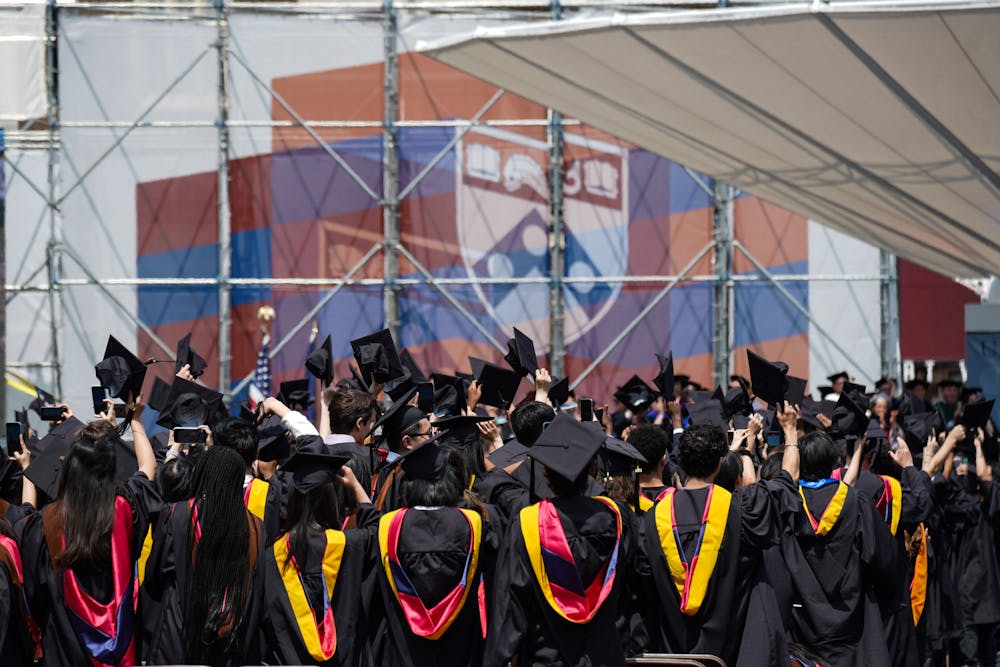In an entirely unsurprising decision last month, the Supreme Court ended affirmative action, a policy which allows for universities to consider race as an admissions factor to craft a diverse student body.
At the crux of the Supreme Court’s decision was the suit brought by Students for Fair Admissions (SFFA), a nonprofit which believes that “racial classifications and preferences in college admissions are unfair, unnecessary, and unconstitutional.” In their most recent suits, SFFA argued that Asian Americans were victims of racial discrimination at University of North Carolina at Chapel Hill and Harvard College through the use of subjective standards in the admissions process. At Harvard, this involved assessing “personality traits” — on which Asian Americans were more likely to be rated lower — while at UNC, SFFA claimed more broadly that the university discriminated against white and Asian American applicants.
Although the universities’ actions are largely indefensible, they — especially Harvard’s — poignantly speak to the position of Asian Americans in this country: at once buoyed and weighted by a paradoxical form of racism. The model minority myth refers to supposedly positive stereotypes that double as cultural expectations which deem a minority (in America, Asian people) as successful, smart, and passive, among other things.
Yet, the myth is just that — a myth. Asian Americans are not a monolith, and such stereotypes pigeonhole them while simultaneously punishing them for over-conforming to the expectations set in accordance with white hegemony, as we saw in the admissions practices at Harvard and UNC.
The larger point at issue, however, is that the model minority myth implies and relies on the existence of the not-so-model minority that is often painted as lazy, violent and criminal. Asian Americans cannot be held up as the standard without a corresponding racial foil that necessarily denigrates other people of color. This fundamental dynamic of the model minority myth serves to split larger minority community across racial lines and undermine cross-racial solidarity, often between Black and Asian people in the American context.
This is intentional and grounded in a false equivocation of the racism historically experienced, and contemporaneously felt, by Asian American and Black people. However, the two are, in fact, not the same as what professor Claire Jean Kim of the University of California, Irvine points out, stating, “Asians have faced various forms of discrimination, but never the systematic dehumanization that Black people have faced during slavery and continue to face today.” Yet the model minority myth relies on a standardization of the varied obstacles all people of color face, conveniently obscuring differences in the depth of historical racism.
The model minority myth also simultaneously drives a wedge between members of the Asian American community itself. Income inequality is the most pronounced of any racial group among Asian Americans, and the model minority myth flattens out this diversity of experience, opting to, for example, foreground Chinese doctors while pushing Indian taxi drivers into the background. This serves to cement Asianness as hierarchically defined and delimited by the majority, which is not and has never been Asian people.
Calling the model minority myth a “myth” does not do it justice. It is far more than that. It is an intentionally-crafted narrative used to diminish the effects of racism felt by other people of color, especially Black people, while allowing Asian Americans to feel as though they can assimilate whiteness if they just work hard enough. But access to elite education, high-paying jobs, and even ostensible social acceptance, has not — and will not — fundamentally change the position of Asian Americans in this country, a fact the Harvard case proves all too well. Lower personality scores are merely a symptom of the larger malaise that is the racist narrative which maintains a stiff culture cachet.
Lending strength to its power is the fact that so many Asian Americans have internalized the model minority narrative and with it the myths of American meritocracy and The Great American Dream. How many times have I been told by my Asian father that Penn was the key to my future? That if I just worked (and worked, and worked) and kept my head down, I could make it. How many Asian Americans were told a variation of that same thing for their entire childhood?
While that may read to some as an empowering distillation of the bootstrapping spirit supposedly inherent in the American zeitgeist, it is in fact a striking example of the potency of the model minority narrative — a narrative that diminishes each of our unique personhood into an abstract “Asian person” who has a singular goal until eighteen, and then another goal (financial prosperity) after college, and so on, with no room for failure. These markers of success are not our own; we have, instead, adopted a definition of success that pleases — it must, since they constructed it — white America, at the expense of our own individuality, dreams, faults, and selves.
More importantly, by accepting this narrative, Asian Americans have also aligned themselves with the forces of racism and white supremacy by allowing a disingenuous representation of ourselves to be leveraged against other people of color. Indeed, there is no better example than that of the SFFA case and the pivotal role Asian Americans played in its success. In our ardor to pursue higher education, we have allowed ourselves to be weaponized as pawns in defense of the racist politics of white, conservative demagogues like Edward Blum.
It is important to acknowledge that Asian Americans were discriminated against at both Harvard and UNC — and very likely far beyond — on the basis of racist stereotypes. It is also requisite to make clear that Asian Americans face discrimination more largely: in the workplace, socially, and long-historically. However, by so readily accepting the narratives fed to us, we have made a grave error and dealt a huge blow to the advancement of people of color writ large in this country.
Unfortunately, our participation in doing so is consistent with the fact that 76% of Asian American adults say race should not be a factor in college admissions. Over a quarter claim that efforts to increase diversity have disadvantaged them before, and 36% believe the consideration of race and ethnicity make the admissions process less fair. But according to a study by Georgetown University, the underlying assumption that Asian Americans are disproportionately disadvantaged by affirmative action does not hold.
Instead, the study found that the likelihood of being admitted to the most selective schools as an Asian American was on par for that of a non-Asian person. Additionally, Asian Americans are more likely to apply to highly selective colleges regardless of their test scores, which explains higher rates of denial and is “not evidence of bias.” In turn, this works towards debunking an actual myth: that affirmative action is the source of discrimination against Asian Americans in the college admission process. But it isn’t, and ending the policy will not alter the racist ways Asian Americans are perceived in higher education, let alone beyond.
But this is all too little, too late. The assimilation by (too) many Asian Americans of the model minority narrative helps explain the higher application rate to selective schools and the consequent lower acceptance rate, but also the willingness to buy into a right-wing movement to end race conscious admissions, and, ultimately, our complicity in achieving just that.
To be clear, the end of affirmative action will be felt immediately and disproportionately by Black and Latino students. Not Asian Americans. But more consequentially, it will have long-term effects: educational attainment has been shown to be one of the most important factors in determining social mobility, and a decrease in access to higher education spells even more trouble for that largely phantasmic American Dream.
We were used. Our ready acceptance of the model minority narrative — all its attendant fantasies like the American Dream — and a conservative, racist movement intent on ignoring the continued role of racism in shaping many Americans' lives, dovetailed too nicely to make us ripe for the picking. And picked we were. Not by a minority coalition seeking to reform an imperfect system, but by forces of white supremacy seeking to annihilate it.
At the center of this irreversible folly is our wholesale subscription to an implicitly racist narrative. I urge my fellow Asian Americans to reconsider our position in relation to it, work to dismantle it, and disabuse it of its power lest it should once again lead us into being disingenuously co-opted in support of a fight that was never our own. For the time being, we cannot undo what we are, inarguably, complicit in doing. However, in the meantime, we must fight to ensure our universities make tangible changes to their admissions processes that will account for the damage done by the SCOTUS decision.
It is, after all, the first step to distancing ourselves from a narrative we’ve spent our whole lives learning.
VINAY KHOSLA is a rising College junior studying history and political science from Baltimore, Md. His email is vkhosla@sas.upenn.edu.









